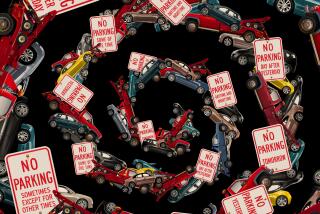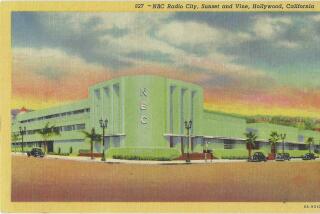Who Calls Tattler Lines for Drivers?
- Share via
It’s an open invitation that has turned America into a nation of stool pigeons.
It’s that bumper sticker asking: “How Am I Driving? Call 1-800-XXX-XXXX.”
And those so questioned, including the near-missed, the cut-off and indignant, are indeed reaching out to touch their transgressors. Also, to praise a few freeway Samaritans.
Since 1986 when the Florida Trucking Assn. pasted the message on its members’ 30,000 tractor-trailers, the association has logged an average 25 calls weekly to 1-800-345-SEMI.
Comments have ranged from protests about 50-ton tailgating, through compliments for a trucker’s roadside assistance, to one woman’s criticism of the purple-and-yellow logo on one 18-wheeler.
“The colors clash,” she told Cindy Crisp, an association assistant. “Tacky and quite offensive.”
‘Four or Five Calls a Week’
At Rescue Industries--a San Diego-based rooter service that unclogs the plumbing of 17 cities in seven states--the call-in stickers are on 320 vehicles.
“It brings us about four or five calls a week, with a ratio of 20-to-1, negative to positive,” said Fred Burns, safety and training manager for Rescue. “Yes, we do occasionally get a compliment about a driver’s courtesy, and that makes us feel good.
“We’ve also had a couple of calls that sounded like a spiteful girlfriend trying to get back at a boyfriend. Guys with car phones take great delight in calling us and several times, usually from Texas, we’ve had someone saying: ‘Yeah, wahl, ah’m on Interstate 10 followin’ this dude doin’ 90 and ah’m having trouble keeping up.’
“And we’ve had a woman caller who said she didn’t like the way one of our drivers was looking at her and maybe he was trying to proposition her.”
But, Burns added, no callers have asked for a driver’s home telephone number or his marital status.
Is recruiting highway squealers an effective corporate tool?
According to Ed Dupre, assistant general manager for Zee Medical Services of Santa Monica, it’s better than having the boss riding shotgun.
“We were getting dings and minor accidents and we felt by doing this (adding stickers to 17 vehicles) it would make our drivers more defensive,” he said. “We started the program six months ago and now we’re probably having fewer fender benders. It hasn’t affected our insurance rates yet, but I believe it could.”
From Behind the Wheel
Do drivers resent the surveillance and the constant pressure of driving inside a goldfish bowl?
“Not me,” said Miguel Velasco, a delivery driver with Downtown L.A. Motors. “I think it is a good thing because I know there are a lot of people doing crazy things out there. This stops me from being one of them.”
On the other hand, he said, he has never been turned in.
Then there was the driver who apparently despised having Big Brother on his bumper. He kept peeling the sticker off his stake bed.
‘Almost a Must’
“We had to let him go,” said Nick Shammas, president of Shammas Enterprises, operator of eight Los Angeles automobile franchises. “But as traffic gets thicker and thicker, being in a business where you can’t dillydally and parts have to be somewhere by 4 o’clock . . . then this (call-in) process becomes almost a must.
“I think the major benefit is with the subliminal effect it has on the drivers. Not only do they know everybody is watching them, they also know that we, his employer, have asked them to do it.”
In June, the South Coast Air Quality Management District went to an 800 number--but promoted through distribution of 50,000 buttons rather than bumper stickers--in an effort to put a filter on vehicles belching exhaust smoke.
“We’ve been averaging about 9,000 calls a month since then,” said district spokeswoman Jacqueline Switzer. “We keep the calls anonymous, take the vehicle number and make a DMV (Department of Motor Vehicles) record check. When we have a match with the make and color of vehicle, we send a letter to the owner saying his car was observed emitting excessive exhaust smoke and please get it to a mechanic for repairs.”
No Official Teeth
The district has no enforcement powers. It does not play informant for the California Highway Patrol. But, acknowledged Switzer, the letters are on district stationery, that implies official teeth, and so “we have had people send in copies of their repair bills . . . both private individuals and companies.”
The sub-benefit, Switzer added, is that the fact that 8,300 people called 1-800-CUT-SMOG in October means “there now are at least 8,300 more people out there aware of the program.”
“Certainly a toll-free number with operators on duty 24 hours a day gives the public a feeling of having some role in the way a difficult community problem is solved.”
To Switzer, at least, telephoning reports to the district’s anti-smog program isn’t quite as difficult as making calls to snag freeway duffers.
“I once tried to get a guy who really was driving like a jerk,” she explained. “But I couldn’t find a pencil and paper to write down the 800 number.”
Origins Unknown
Nobody--at least, no spokesmen for the Automobile Club of Southern California, the National Transportation Safety Board, nor the Greater Los Angeles chapter of the National Safety Council--seems to know who started the program. Or when. It must be presumed that he or she wanders the same automotive mists obscuring fame for whoever invented fuzzy dice and curb feelers.
Rescue Industries, however, has been doing it for at least five years and plans to continue the program indefinitely. Operators of LIFE (Love Is Feeding Everyone), a Los Angeles food charity, added the label to its six-van fleet two years ago on the advice of its insurance broker and, operations manager Bill Benn said, “it has been an inexpensive, effective way of checking on our drivers.”
The ubiquitous sticker--one that doubtless produced no calls to a Ft. Wayne pizza chain--even appeared on the back of an Indianapolis race car this year.
Shammas suggested the idea for his company seven years ago as a public relations tool, as vehicular insurance control and as a monitor of employees’ driving habits.
Warnings, Termination
Verbal warning is given first offenders. A second complaint produces a written reprimand. Three calls and you’re out of a job.
“We had tried many things for insurance control, including bonuses for no-scratch driving,” Shammas said. “But this (sticker) program is by far the best . . . and there has been some reduction in our accident rate.”
Calls can even produce a windfall.
“Somebody reported one of our trucks for speeding,” he said. A check showed its driver wasn’t on duty at the time. “Then we found out that he had been using our truck to haul his furniture. I’m sure we terminated him.”
The call-in stickers have produced at least one notable imitator that is far from flattery. It displays an 800 number and a scatological suggestion. Wayne Baker, a Cottondale, Ala., trucker thought it quite appropriate for his big rig.
An Order, a Lawsuit
But an Alabama state trooper ordered Baker to remove the message or be ticketed under a state law banning obscene bumper stickers.
Baker complied--then filed a federal lawsuit questioning the constitutionality of the law.
A one-day trial was held in March and a ruling is pending.
“I called a linguist to the stand who said it means ‘Go away, don’t bother me, kid’ . . . except in a more forceful manner,” said Ed Still, the Birmingham lawyer representing Baker.
Still, said Still, if somebody yelled the message at him “it might be different.”
Then he does consider the pinchbeck sticker to be offensive?
“Offensiveness is very much a matter of personal taste,” Still said. “Personally, George Bush calling Michael Dukakis a card-carrying liberal offended me.”
More to Read
Sign up for Essential California
The most important California stories and recommendations in your inbox every morning.
You may occasionally receive promotional content from the Los Angeles Times.










